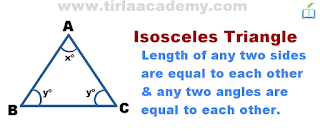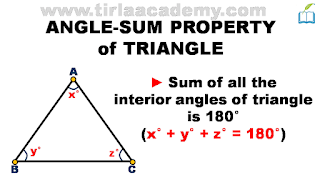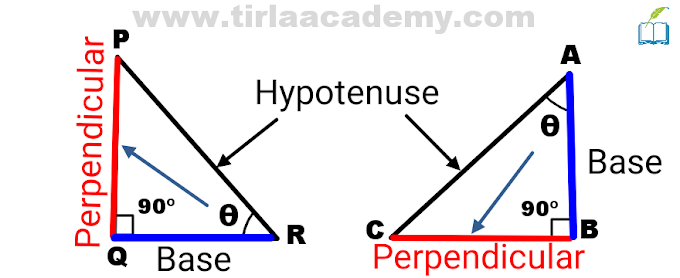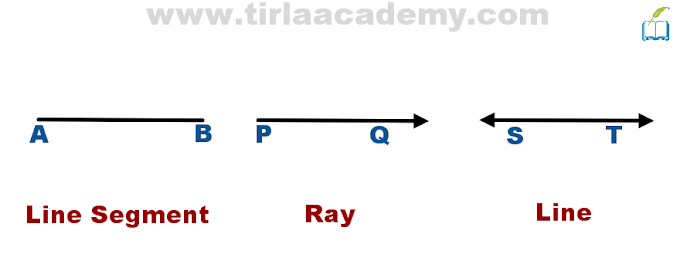In this article, we will learn What is a polygon shape, What is an irregular polygon, how to find the Polygon area and perimeter & many more.
The following points we will cover on polygon figures in detail:
- What is Polygon in maths?
- What is Regular and Irregular Polygon?
- Regular vs Irregular Polygon
- Convex Polygon and Concave Polygon
- What is the Area of Polygon?
- How to Calculate the area of Polygon?
- What is the Perimeter of a Polygon?
- How to find the Perimeter of Polygon?
- How to find the exterior angle of Polygon?
- How to find interior angle of a Polygon?
- Polygon lines of Symmetry
- FAQ's on Polygon Shape
What is POLYGON in Maths?
Polygon is a two-dimensional simple closed shape that is made only from line segments.
Elements of polygons are sides and vertices.
Regular and Irregular Polygon
Regular Polygon
Polygons whose all sides are equal and all angles are equal to each other are known as Regular Polygon.
- Equilateral Triangle (3 sided Polygon)
- Square (4 sided Polygon)
- Regular Pentagon (5 sided Shape)
- Regular Hexagon (6 sided Shape)
- Regular Heptagon (7 sided Shape)
- Regular Octagon (8 sided Polygon)
- Regular Nonagon (9 sided Polygon)
- Regular Decagon (10 sided Polygon)...., etc
Irregular Polygon
Polygons whose all sides are not equal or all angles are not equal to each other are known as Irregular Polygon.
- Scalene Triangle (3 sided Polygon)
- Isosceles Triangle (3 sided Polygon)
- Rectangle (4 sided Polygon)
- Rhombus (4 sided irregular polygon)
- Trapezium (4 sided Polygon)
- Kite (4 sided Polygon)
- Irregular Pentagon (5 sided Shape)
- Irregular Hexagon (6 sided Shape)
- Irregular Heptagon (7 sided Shape)
- Irregular Octagon (8 sided Polygon)
- Irregular Nonagon (9 sided Polygon)
- Irregular Decagon (10 sided Shape)...., etc
Regular vs Irregular Polygon
- All angles of regular polygons are equal to each other while all the angles of irregular polygons may be equal or maybe not equal to each other.
- All sides of regular polygons are equal to each other while all the sides of irregular polygons may be equal or maybe not equal to each other.
- Examples of Regular Polygons are Square, Equilateral triangle, etc. while examples of Irregular Polygons are Trapezium, Kite, Isosceles triangle, etc.
- Easy to find the area and perimeter of regular polygon as compared to irregular polygons.
Convex Polygon and Concave Polygon
Convex Polygon
A polygon whose all the interior angles are less than 180 measures.
Concave Polygon
A polygon whose at least one interior angle is more than 180 measures.
After the discussion on regular, irregular, convex, and concave polygons we are going to learn about the area and perimeter of Polygons.
Area of Polygons
Area of Polygons is the surface inside the boundary of the Polygon.
There are various formula for area of Polygon. Let's discuss it and learn how to calculate the area of the Polygon?
How to calculate the area of Polygon?
Calculating the Area of Regular Polygon (three-sided)
If you are calculating the area of a three-sided polygon then we need the formula of the area of a triangle.
Area of Equilateral Triangle = √3side²/4
Example:- Find the area of a triangle whose length of each side is 4cm.
Solution :- Given, Side of triangle = 4cm
Area of Equilateral triangle:
= √3side²/4
= √3(4)²/4
= 4√3 sq. cm
Calculating the area of Regular Polygon (four-sided)
If you are calculating the area of a four-sided polygon then we need the formula of the area of quadrilaterals.
Area of square = Side*Side
Example:- Find the area of a square whose each side is 5cm long.
Solution :- Given, Side of square= 5cm.
Area of Square:
= Side*Side
= 5cm*5cm
= 25 sq. cm
Calculating the Area of Irregular shapes for three-sided polygon
If you are calculating the area of a three-sided polygon then we need the formula of the area of a triangle.
Area of Right Angled(90°) Triangle = (1/2)*Base*Height
Example:- Find the area of a Right-angled triangle whose height is 10cm long and its base is 5 cm.
Solution :- Given, Height of triangle = 10cm & Base = 5cm.
Area of Right-angled triangle
= (1/2)*Base*Height
= (1/2)*5*10
= 50/2
= 25cm sq.
Heron's Formula for Area of Triangle = √{s(s-a)(s-b)(s-c)}
Example:- Find the area of a triangle if length of whose sides are 7cm, 5cm, and 6cm.
Solution :- Given, Length of sides of triangle are a = 7cm, b = 5cm, and c = 6cm.
s = (a+b+c)/2 {s = semi-perimeter of triangle}
s = (7cm+5cm+6cm)/2
s = 18cm/2
s = 9cm
Area of triangle by Heron's Formula:
= √{s(s-a)(s-b)(s-c)}
= √{9(9-7)(9-5)(9-6)}
= √{9*2*4*3}
= √(216) sq.cm.
Calculating the area of Irregular shapes (four-sided)
If you are calculating the area of a four-sided irregular polygon then we need the formula of the area of quadrilaterals.
Area of Rectangle = Length*Breadth
Example:- Find the area of a rectangle whose length is 10cm and breadth is 4cm long.
Solution :- Given, Length of rectangle = 10cm and Breadth = 4cm
Area of Rectangle:
= Length*Breadth
= 10cm*4cm
= 40 sq. cm
Area of Parallelogram = Base*Height
Example:- Find the area of Parallelogram if its perpendicular height is 10cm and its base is 8 cm long.
Solution :- Given,Height of parallelogram = 10cm & base = 8cm
Area of Parallelogram:
= Base*Height
= 8*10
= 80 sq. cm
Area of Rhombus = (1/2)*(Ist Diagonal)*(IInd Diagonal)
Example:- If the length of the diagonals of the Rhombus are 10cm and 12cm long. So find its area.
Solution :- Given, Length of D1 = 10cm & D2 = 12cm
Area of Rhombus:
= (1/2)*(Ist Diagonal)*(IInd Diagonal)
= (1/2)*(10cm)*(12cm)
= 120/2
= 60 sq. cm
Area of Trapezium = (h/2)(a+b)
Example:- A trapezium has the length of its parallel sides are 8 cm and 12 cm respectively. Find the area of the trapezium if its perpendicular height is 5 cm long.
Solution :- Given, Length of a = 8cm, b = 12cm and height is 5cm.
Area of Trapezium:
= (h/2)(a+b)
= (5/2)(8+12)
= (5/2)*20
= 100/2
= 50 sq. cm.
Perimeter of Polygon
The perimeter of a Polygon is the length of the boundary of the Polygon.
How to find perimeter of Polygon?
Calculating the Perimeter of Regular Polygon (three-sided)
If you are calculating the perimeter of a three-sided polygon then we need the formula for the perimeter of a triangle. Let's learn how do you find perimeter of a triangle?
The perimeter of the Equilateral Triangle = 3*side
Example: Find the perimeter of a triangle if the length of each side is 6cm.
Solution: Given: Side = 6cm
Perimeter of the Equilateral Triangle:
= 3*side
= 3*6
= 18cm
Calculating the Perimeter of Regular Polygon (four-sided)
If you are calculating the perimeter of a four-sided polygon then we need the formula of the perimeter of a quadrilateral:
Perimeter of Square = 4*side
Example: Find the perimeter of a Square if the length of its side is 5cm each.
Solution: Given: Side = 5cm
Perimeter of the Square:
= 4*side
= 4*5
= 20cm
Calculating the Perimeter of Regular Pentagon (five-sided)
If you are calculating the perimeter of a five-sided polygon then we need the formula of the perimeter of a Pentagon shape:
Perimeter of Regular Pentagon = 5*side
Example: Find the perimeter of the Pentagon of sides 10cm each.
Solution: Given: Side of pentagon = 10cm
Perimeter of the Regular Pentagon:
= 5*side
= 5*10
= 50cm
Calculating the Perimeter of Regular Hexagon (six-sided)
If you are calculating the perimeter of a six-sided polygon then we need the formula of the perimeter of a Hexagon:
Perimeter of Regular Hexagon = 6*side
Example: Find the perimeter of the Hexagon of sides 10cm each.
Solution: Given: Side of hexagon = 10cm
Perimeter of the Regular Hexagon:
= 6*side
= 6*10
= 60cm
How to find the Perimeter of Irregular Polygons (three-sided)
If you are calculating the perimeter of a three-sided irregular polygon then we need the formula of the perimeter of a triangle:
The perimeter of the triangle = Sum of all sides
Example: A triangle has sides of 2cm, 3cm, and 4cm respectively. Find the perimeter of the triangle.
Solution: Given: Sides of the triangle are 2cm, 3cm, and 4cm
The perimeter of the Irregular shape:
= Sum of all sides
= 2cm + 3cm + 4cm
= 9cm
How to find the Perimeter of Irregular Shapes (four-sided)
If you are calculating the perimeter of a four-sided irregular polygon then we need the formula of the perimeter of a quadrilateral:
Perimeter of Rectangle = 2*(Length + Breadth)
Example: Find the perimeter of the rectangle if its length is 12cm and breadth is 7cm long.
Solution: Given: Length = 12cm & breadth = 7cm
Perimeter of Rectangle:
= 2*(Length + Breadth)
= 2*(12 + 7)
= 2*19
= 38cm
Perimeter of Rhombus = 4*side
Example: Find the perimeter of a Rhombus if the length of its side is 7cm each.
Solution: Given: Side of Rhombus = 7cm
The perimeter of the Rhombus:
= 4*side
= 4*7
= 28cm
Perimeter of Parallelogram = Sum of all sides
Example: Find the perimeter of Parallelogram if length of its sides are 12cm, 15cm, 12cm & 15cm long.
Solution: Given: Length = 15cm & breadth = 12cm
Perimeter of Parallelogram:
= Sum of all sides
= 12cm + 15cm + 12cm + 15cm
= 54cm
Perimeter of Trapezium = Sum of all sides
Example: If length of the sides of trapezium are 11cm, 4cm, 22cm & 5cm long. Find its perimeter.
Solution: Given: Sides of trapezium are 11cm, 4cm, 22cm & 5cm long
Perimeter of the Trapezium:
= Sum of all sides
=11cm + 4cm + 22cm + 5cm
= 42cm
Calculating the Perimeter of Irregular Pentagon (five-sided)
If you are calculating the perimeter of a five-sided irregular polygon then we need the formula of the perimeter of a Pentagon:
Perimeter of Irregular Pentagon = Sum of all sides
Example: Find the perimeter of the Irregular pentagon if the length of its sides is 5cm, 4cm, 3cm, 5cm, & 3cm long.
Solution: Given: Length of the sides of pentagon are 5cm, 4cm, 3cm, 5cm, & 3cm long.
Perimeter of the Irregular Pentagon:
= Sum of all sides
= 5cm + 4cm + 3cm + 5cm + 3cm
= 20cm
Calculating the Perimeter of Irregular Polygons shapes (six-sided)
If you are calculating the perimeter of a six-sided irregular polygon then we need the formula of the perimeter of a Hexagon:
Perimeter of Irregular Hexagon = Sum of all sides
Example: If the length of the sides of an irregular hexagon is 5cm, 4cm, 3cm, 5cm, 4cm, & 3cm long. So Find its perimeter.
Solution: Given: Length of the sides of irregular hexagon are 5cm, 4cm, 3cm, 5cm, 4cm & 3cm long.
Perimeter of the Irregular Hexagon:
= Sum of all sides
= 5cm + 4cm + 3cm + 5cm + 4cm + 3cm
= 24cm
" To find the perimeter of polygon shape, we can add all its sides. It works on all of the shapes such as regular, irregular, concave or convex".
In any polygon shapes there are two types of angles one is exterior angle which is lies outside the polygon and the other is interior angle that is lies inside the polygon. Now learn how to find the exterior angle of polygon shape?
How to find the exterior angle of Polygon?
How to find the exterior angle of Polygon of Irregular Shapes?
Exterior angle of triangle = Sum of its opposite interior angle
Example: A three-sided polygon has interior angles 60, 60, and 60. So find its exterior angle.
Solution: Given: Interior angles are 60, 60, and 60.
Exterior angle of triangle:
= Sum of its opposite interior angle
= 60 + 60
= 120
How to find the exterior angle of Polygon of Regular Shapes?
Exterior Angle of Regular Polygon = 360/Number of Sides
Example: To find the exterior angle of a six-sided regular polygon.
Solution: Given: Number of Sides = 6
Exterior Angle of Regular Polygon:
= 360/Number of Sides
= 360/6
= 60
Now, let's talk about the interior angle and how to find it?
How to find the interior angle of a Polygon?
How to calculate the interior angle of Polygon of Irregular Shapes?
Sum of all the Interior angle of three-sided Polygon = 180
Example: To find the interior angle of triangle if two of its interior angle are 60, & 90.
Solution: Given: Interior angles are 60 & 90
Sum of all Interior angles of a polygon of three sides = 180
60 + 90 + x = 180
150 + x = 180
x = 30
How to find the interior angle of Polygon Regular Shapes?
By Linear Pair = Sum of two adjacent angles are 180 in straight line
Example: To find the interior angle of polygon if one of its exterior angle is 60.
Solution: Given: Exterior angles = 60
Sum of two adjacent angles are 180 in straight line
60 + x = 180
x = 180 - 60
Polygon Line of Symmetry
FAQ's on Polygon Shapes
Which Polygon has 5 sides?
Pentagon is 5 sided polygon.
Which Polygon shape with 7 sides?
Heptagon is 7 sided polygon.
Polygon vs Quadrilateral
Polygon is a simple closed shape that is made only from line segments while the quadrilateral is 4 sided polygon.
A polygon having 10 sides?
A decagon is a polygon that has 10 sides.
Is circle a Polygon?
No, Circle is not a Polygon because it has a curved shape while all polygons shape is made up of line segments.
Is a Polygon a Rectangle?
Yes, Polygon is a rectangle because a rectangle is a simple closed shape that is made up only of line segments.
Which Polygon has 6 sides and 6 angles?
Hexagon is 6 sided polygon and hexagon has 6 angles.
Which Polygon has 4 sides and 4 angles?
The quadrilateral is 4 sided polygon and it has 4 angles.
Which Polygon shape with 9 sides?
Nonagon is 9 sided polygon.
Which Polygon shapes with 8 sides?
The octagon is a polygon with 8 sides.
What is the definition of Irregular Polygon?
A Polygon having all sides or all angles are not equal to each other.

















